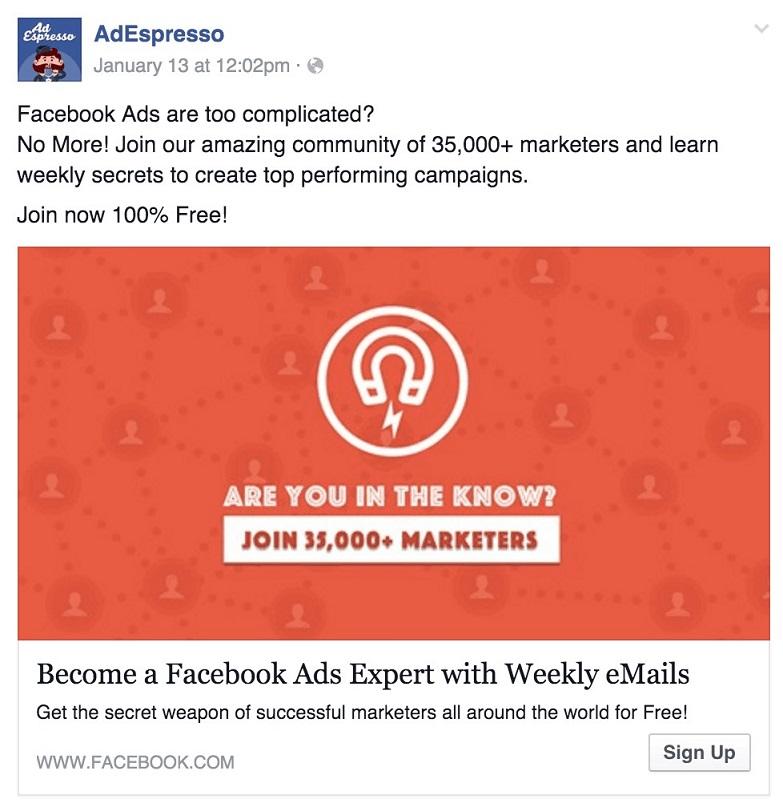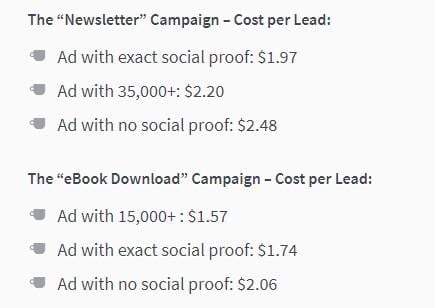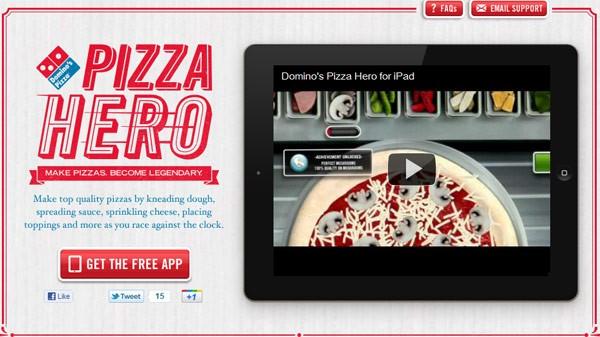What can an experiment conducted about a century ago involving a scientist ringing a bell while feeding his dogs teach you about marketing?
How about a Volkswagen experiment in which people are made to use a piano staircase instead of an escalator?
These experiments all tap into the basic, primal nature of humans to get people to act in ways they ordinarily wouldn’t. More importantly, the same principles used in these experiments can be used to design your marketing strategy for maximum impact. Here are five marketing lessons you can learn from timeless psychology experiments.
Lesson #1: Use positive social proof
In 1951, famed psychologist Solomon Asch devised an experiment to see how group pressure impacted decision making. For this experiment, he recruited 50 male students from Swarthmore College to participate in a vision test.
The experiment was set up, however, in such a way that a participant was put in a room with seven confederates who had agreed in advance about what their response to the test would be. Each participant had no idea about this and assumed that the confederates were also participants.
The people in the room were shown a target line and another A, B, or C line for comparison. Each person in the room then had to say out loud which of the lines they believe to be the target line.
By design, the confederates got to answer first while the real participant always answered last.
Asch found that the answer the confederates gave significantly influenced the answer of participants. There were 18 trials, and the confederates were instructed to give the wrong answer in 12 of them, called “critical trials.” In these critical trials, Asch found that 75% of the participants chose the clearly incorrect answer at least once.
After the experiments, participants admitted that they answered incorrectly because of the group—they didn’t want to stand out or be ridiculed. Some even said they believed that the answer given by the group must have been correct.
RELATED: 7 Easy Marketing Psychology Tactics to Influence Customers
How to use this in your marketing strategy
“Groupthink,” “herd mentality,” and the “bandwagon effect” are all terms you’ve probably heard at one time or the other. They all refer to the same phenomenon: People are likely to conform to the idea of the majority—of people in the same group or of people they believe to be similar to themselves— when making decisions.
You want to introduce elements of social proof that show a majority opinion in favor of your offer in order to influence your prospects to act the way you want.
Some tips for making this happen….
1. Showcase key numbers about your brand
This could be traffic, subscriber, or actual user information.
AdEspresso ran a series of Facebook ads to test the principle of social proof in form of showcasing key numbers. The experiment included three ad creatives each for two offers:
- One of the ads included an exact number of subscribers (e.g., 17,348) who have taken advantage of the offer.
- Another of the ad included a rounded number of subscribers (e.g., 35,000) who had taken advantage of the offer.
- The third ad included no social proof at all.
AdEspresso then spent an average of $100 on each of the ads and measured the results.
The below screenshot shows the result they got:
AdEspresso found that the ads with social proof generally outperformed the ads without social proof. While the company couldn’t conclude about exact or round social proof being better, it was clear that highlighting any number is better than not highlighting any number.
2. Display real-time user activity on your site
Making this information visible on your website lets visitors know that other people are interacting with your brand. This could include a footer popup notification (like the one in the screenshot below) that comes up whenever people purchase a product, sign up for your newsletter, or take some other desired action.
Lesson #2: Leverage “default” options
In a 2003 study, researchers studied organ donation in various countries, comparing countries using an “opt-out policy” to countries using an “opt-in policy,” to see how much of an impact default options can have on people’s decisions.
Countries using the opt-out policy enroll citizens as organ donors by default but instead give them the option to opt out from being a donor. Countries using the opt-in policy, however, do not automatically enroll citizens but prompt them to opt in as donors. The study found that, when automatically enrolled, people are less likely to opt-out and overall organ donation rate was much higher; in fact, in countries defaulting to an opt-out policy, where people were signed up to be organ donors by default, organ donations were 80% higher compared to countries where an opt-in policy was default.
This behavior is explained by the “default effect,” a cognitive bias in which people are more likely to go with the default option they were presented over other options during a transaction.
How to use this in your marketing strategy
Knowledge of the default option can be used to help your marketing strategy in so many ways. Here are a couple options to get started.
1. Don’t take default options and choices for granted
Apre-ticked checkbox, a pre-filled form, or a pre-selected package is often what many people will choose without bothering to make any changes.
2. Consider introducing a free trial of your product.
A free trial is also a form of default choice that’s particularly effective for subscription models. People try your offer for a period of time (seven days, 30 days, etc.) at no cost to them and have a choice to cancel before the end of the trial period—or do nothing and be billed starting from the end of the trial.
Lesson #3: Use anchoring for your pricing
In a 1974 study, researchers Amos Tversky and Daniel Kahneman asked a group of participants to estimate the percentage of African nations that are members of the United Nations. Before the guess, however, participants were asked to spin a wheel with numbers ranging from 0 to 100.
Participants were made to believe that the numbers shown after spinning the wheel were assigned randomly. Unknown to them, however, the wheel had been rigged to always show the number 10 or 65.
Tversky and Kahneman found that participants that were shown the number 10 guessed, on average, that a lower number of African countries are in the United Nations compared to participants that were shown the number 65.
Even more important was the fact that participants had no idea that the number they were shown on the wheel had any influence on their decision making.
How to use this in your marketing strategy
Using anchoring on your sales page before asking prospects to pay can have a significant impact on how much they end up giving you.
Some ideas….
1. Refer to an anchor price before ever introducing any real pricing
For example, a fitness product could discuss one or more examples of people paying in excess of $1,000 to hire a fitness coach or discuss the ideal range of price people pay to hire a fitness coach—even without being aware, readers would be anchoring your product to the price mentioned.
When they finally find out that the product costs $199, for example, it will seem like such a bargain compared to what they had in mind and they’d be very ready to pay.
This comparison of managed web hosts does this really well in its introduction:
The phrase “plans can start from $3.95/mo going up to $90/mo” is an anchor to compare the price of the options on the page against.
2. Use discounted prices to make people feel as if they are getting a bargain
People will naturally anchor the price of the discounted product to the price before the discount and, as a result, they’ll be more willing to pay.
Here’s a great example from Amazon:
As you can see from the above screenshot, the “List Price” is $41.99, while the “actual price” is $19.54. People naturally anchor the actual price to the list price, feel they are getting a really good discount, and rush to buy.
Lesson #4: Make ordinary, mundane tasks fun
In a 2009 experiment, Volkswagen ran a series of experiments to see how effective the Fun Theory can be at getting people to do what they wouldn’t ordinarily do. The Fun Theory, in essence, states that when people are given a series of options, they are most likely going to choose the one that is more fun.
The Volkswagen experiment included activities such as asking people to use a piano staircase instead of an escalator, a bottle bank arcade machine designed to make recycling more fun, and the world’s biggest garbage bin.
Volkswagen found that all these fun interventions were used significantly more than the default, familiar options. The fun garbage bin collected 41kg more garbage in a day compared to the next ordinary local garbage bin—which is more than double what the ordinary garbage bin collected.
How to use this in your marketing strategy
When ordinary, mundane tasks are injected with fun, people naturally spend more time doing them and engagement and ROI goes up. There is a reason why gamification is gradually starting to become a big deal marketing-wise.
1. Consider a fun way to incentivize people to take the action you desire.
A notable example comes from Domino’s Pizza, which was able to increase sales revenue by 30% by giving customers the option to create their own pizza through its Pizza Hero app.
2. Use gamification to improve brand interaction
Gamification refers to the use of typical game elements—such as scoring and competition with others—in order to get people to act. Publicly ranking participants in your community based on participation and activity, and letting people know that the rank is influenced by engagement with your brand, or by inviting others to follow your brand, is a good example of gamification in action.
Lesson #5: Create a positive association with your brand
In a series of experiments that began during the 1890s, Russian physiologist Ivan Pavlov measured dogs’ salivation rates while researching animals’ gastric systems, when he noticed that dogs produced saliva in anticipation of feeding when they smell food.
While this salivation was a normal reflex response, Pavlov next observed that the dogs started to salivate when events unrelated to feeding occurred. But these unrelated events had occurred a few times during feeding (such as when the dogs heard the footsteps of his assistant who fed them, or when a door was opened for the assistant to feed them).
Pavlov theorized that these dogs had associated these unrelated stimuli with feeding and decided to test this by introducing other unrelated events during feeding (such as making sounds with a buzzer, the ticking of a metronome, and the ringing of a bell). Pavlov found that the dogs soon associated these unrelated events with feeding and naturally began to salivate when these events occurred, even in the absence of food.
Pavlov’s findings would end up influencing the field of psychology and the understanding of classical conditioning for decades to come.
How to use this in your marketing strategy
You can leverage these learned feelings and responses to create a positive association with your brand or offering and, as a result, boost your sales and ROI.
1. Don’t just sell a product—sell an idea, a feeling
Nike sells footwear, but it is more than just a footwear brand to most people. Due to a carefully-executed strategy in which ads have shown successful athletes and inspiring personalities wearing Nike footwear, Nike has positioned itself in the mind of its target audience as not just any footwear brand but as the footwear brand for greatness.
This Nike commercial from the 2008 Olympics shows just how particular Nike is about associating its brand with greatness:
2. Place your product or brand around ideas you want to be associated with
A notable example on how this is done is the Coca-Cola brand: Coca-Cola’s carefully designed marketing strategy includes marketing campaigns associating Coke with sports, dehydration, and being in the heat. The result is that when people engage in sporting activities or are warm and thirsty, they are conditioned to want to drink a Coke.
Beyond the hack
In conclusion, it is important to realize that the above are not just marketing hacks—they are fundamental principles that affect the way the human mind works. In this sense, they’re almost guaranteed to yield results if you apply the underlying principles effectively.
So what are you waiting for? Develop your marketing strategy based on the findings of the above experiments!
About the author
A consultant, social media specialist, and blogger based in Tel Aviv, Gabrielle Sadeh helps brands share their voices and scale their businesses through powerful digital marketing strategies. The best way to get in touch with her is via her LinkedIn profile.












0 Comments